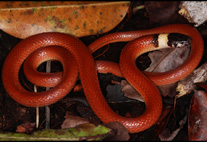Abstract
The ant genus Eurhopalothrix occurs throughout the Neotropics and Australasian tropics, where it is an inhabitant of forest leaf litter and soil. The New World species are reviewed, with an emphasis on the fauna of the MesoAmerican corridor and the Caribbean. Previously unappreciated characters of mandibular dentition and labrum shape vary dramatically among species and species groups. A total of 28 New World species are recognized, of which 14 are described as new. A key to workers of all New World species is provided. Eurhopalothrix procera is reported for the first time in the New World. The following new species are described: E. cimu Longino, sp. nov., E. circumcapillum Longino, sp. nov., E. guadeloupensis Longino, sp. nov., E. hunhau Longino, sp. nov., E. mabuya Longino, sp. nov., E. machaquila Longino, sp. nov., E. megalops Longino, sp. nov., E. ortizae Longino, sp. nov., E. oscillum Longino, sp. nov., E. semicapillum Longino, sp. nov., E. sepultura Longino, sp. nov., E. vulcan Longino, sp. nov., E. xibalba Longino, sp. nov., and E. zipacna Longino, sp. nov. Eurhopalothrix schmidti (Menozzi) is removed from synonymy with E. gravis (Mann).

